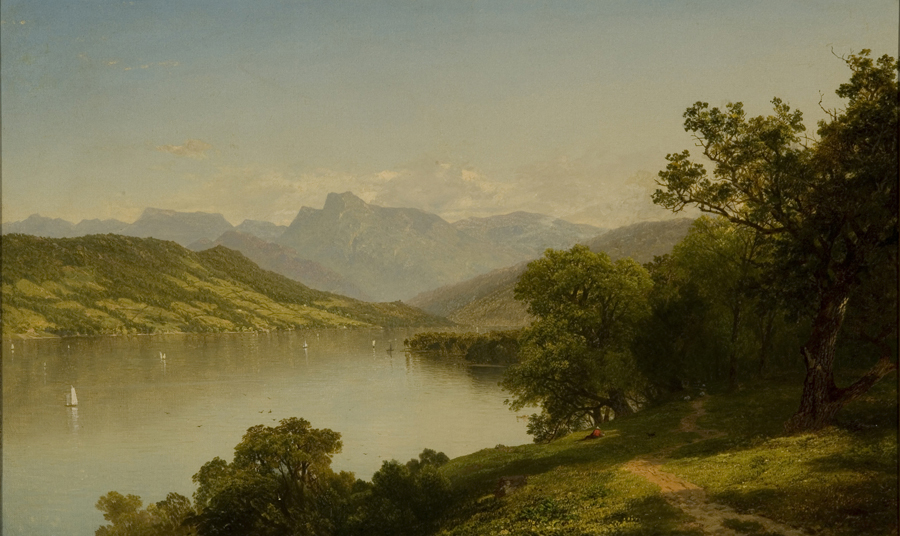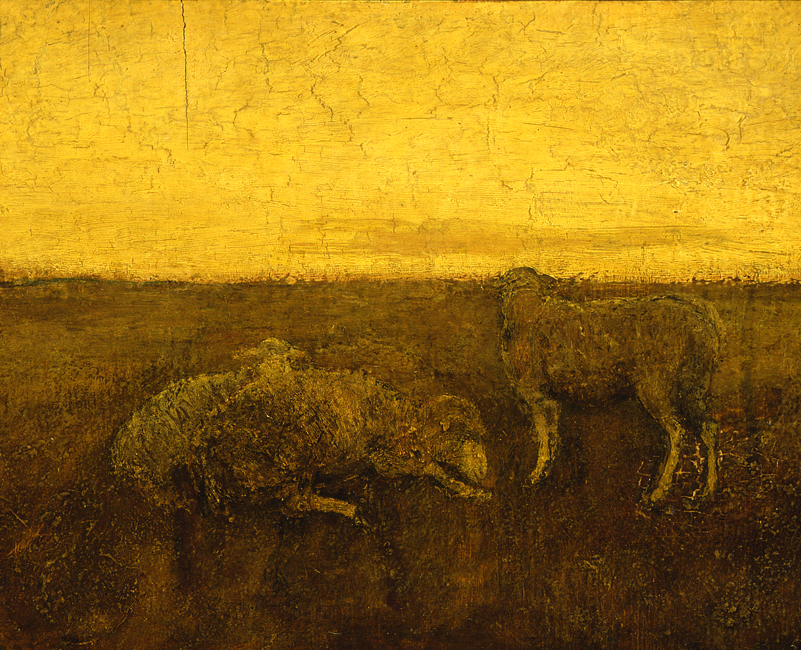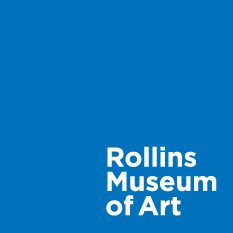
I would like to begin this week’s post on a bit of a personal note. I live in Southwest Virginia, on the edge of the beautiful Blue Ridge Mountains. Since March 30, however, Virginia has been under a stay-at-home order, and my town—normally bustling with students—is eerily quiet. The weather has been getting nicer, with flowers blooming, trees beginning to sprout new leaves, and animals shaking off a winter of inactivity. I yearn to get out and explore the countryside around me, but I (like so many of us) am holding back during this time of social distancing. Perhaps for that reason I have been especially enjoying my research into CFAM’s collection of American landscape painting, which allows me to think of happier times out in the woods. The collection includes a number of wonderful works of nineteenth century landscape art, but today I am going to focus on two of them, and the way in which they illustrate the changing nature of landscape representations in the nineteenth century.
The first, The Langdale Pike, an 1858 work by John Frederick Kensett, fits squarely into the tradition of landscape painting that is most commonly known as the Hudson River School. These painters, following the example of the British-American painter Thomas Cole (1801-1848), ventured forth from New York City to the surrounding countryside, making sketches and preparatory drawings which—upon their returns to their Manhattan studios—they turned into highly polished compositions reflecting the natural beauty of upstate New York, in particular the Catskills, and similar mountainous areas in New England, especially New Hampshire’s White Mountains.1 Though this picture by Kensett actually depicts the Langdale Pikes in England’s Lake District, it does so through Kensett’s mastery of the Hudson River style. This painting presents a landscape safe for human habitation, with a path leading from the lower right into the picture, where a figure—a stand-in for the viewer of the painting—sits under a tree and looks out over the water, which is dotted with boats. The mountains, though craggy and somewhat foreboding, sit safely in the distance, not threatening the placidity of the scene. The gentle curve of the lake itself bends from the foreground into the background, providing the viewer’s eye an easy way into the scene. This is a vision of the so-called Middle Landscape, one perfectly balanced between wilderness and human habitation. Writers and artists in the middle of the nineteenth century believed that this sort of landscape, more than just being pleasant to look at, could provide moral uplift to the American people, modeling the harmony of respectfully competing forces that was seen as the ideal state of American republican government.2 Kensett was one of the most popular landscape artists of his generation, turning out large numbers of such pictures to great acclaim.

This brings me to the second picture, Albert Pinkham Ryder’s early work Landscape with Sheep, which was painted around 1870, when the artist moved to New York City. These works are very different, so much so that they seem like they must have been produced under very different circumstances. Kensett’s work is characterized by its close study of nature, the way in which his smooth application of paint works to present an orderly and coherent vision of a specific place. Ryder, on the other hand, has bathed his entire scene in a beautiful—if somewhat eerie—golden light. The sheep, pasture, and sky all seem to shimmer under its influence. Just twelve or so years after Kensett’s picture, Ryder—who, like Kensett was from New England and who, also like Kensett, was a key member of the New York artistic community—has created a very different vision of the landscape, one that scholars have recognized as much more reliant on subjective, internal factors than on a desire to depict the world as it appeared in an objective sense. Like many of his colleagues at the turn of the twentieth century, Ryder embodies a shift in artistic production from the unified and legible canvases of the Hudson River School to an intensely personal vision.3 Where the buyers of American art had once clamored for depictions of the scenery they saw on their own trips to the countryside, by the turn of the twentieth century they were invested, instead, in visions inspired more by an individual and subjective vision than by any attempt at objectivity.
While I sit here at home I will rely on both artists to get me through, until I can go turn my own objective eye on the Blue Ridge.
2Miller, 13–15.
3Novak, Voyages of the Self, 126. Broun et al., Albert Pinkham Ryder, 34–37.

